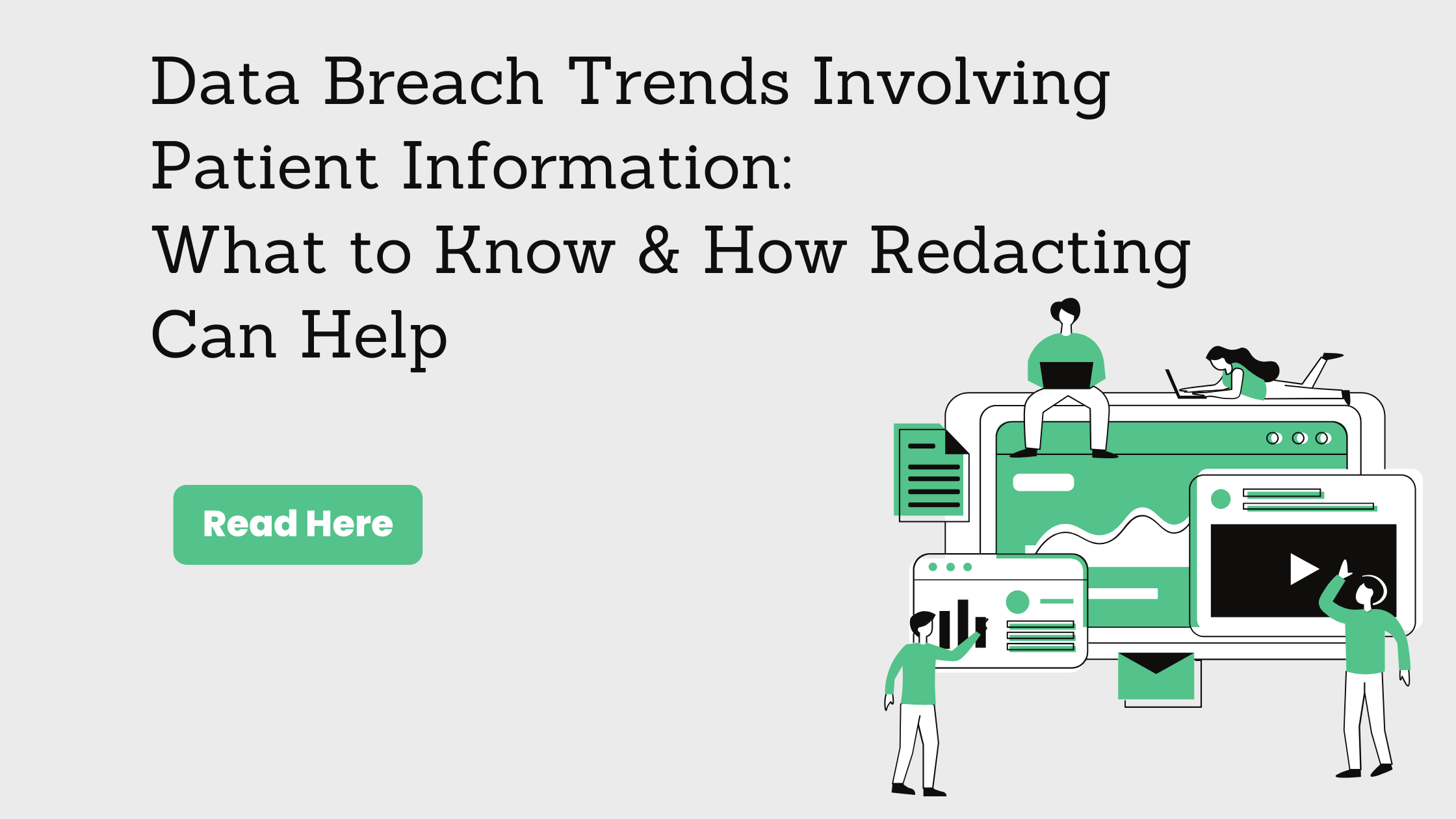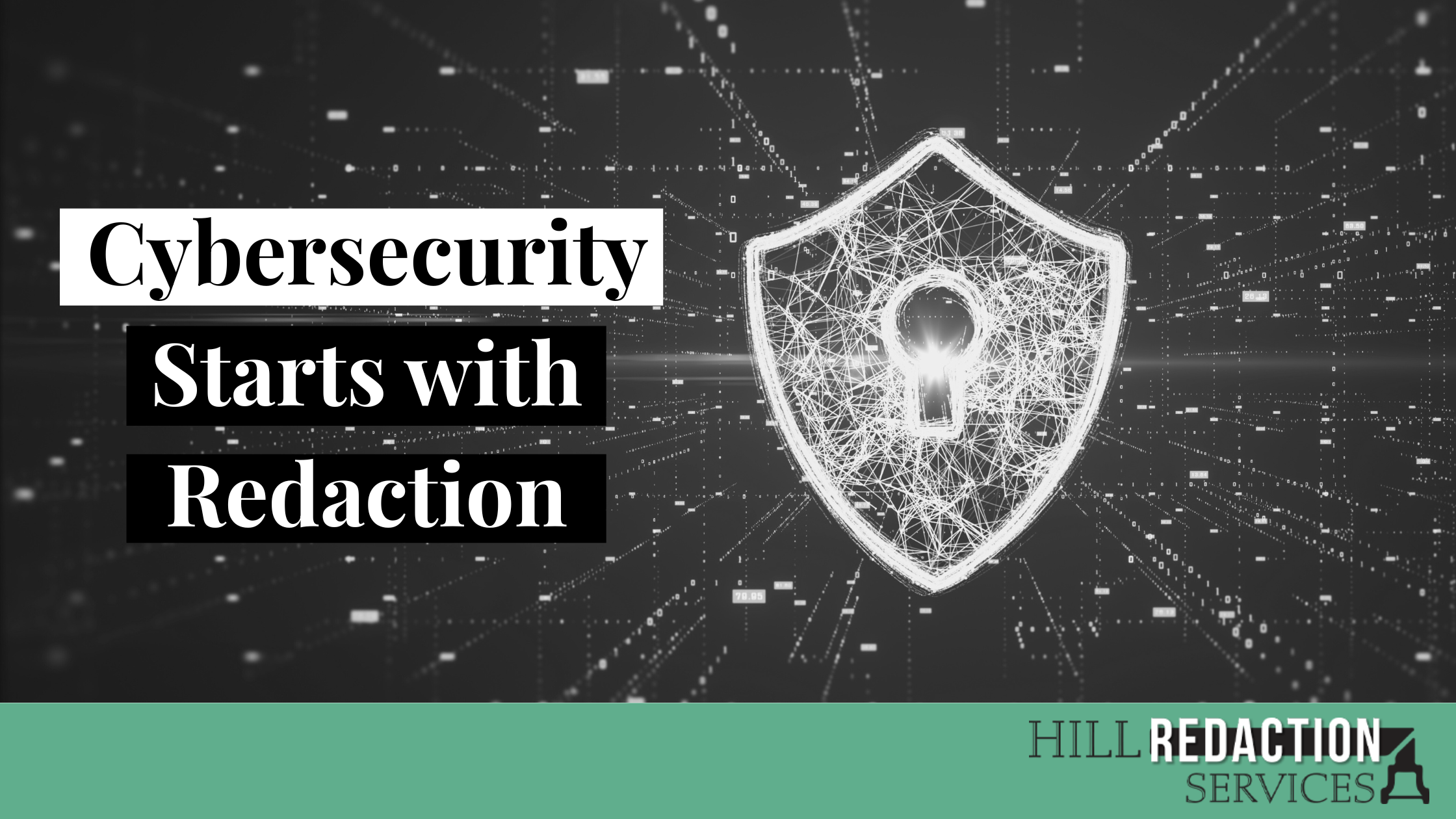
Data Breach Trends Involving Patient Information: What to Know and How Redacting Can Help
The healthcare sector has witnessed an alarming uptick in data breaches. According to a recent analysis, 32% of all recorded data breaches between 2015 and 2022 were in the healthcare sector. In 2022 alone, the sector accounted for 20% of all publicly reported data breaches, with 707 instances being disclosed. With more than 39 million individuals being impacted by these breaches in the first half of 2023, it’s become imperative for the healthcare sector to take necessary measures to safeguard patient information.
In this article, we’ll dive deeper into the data breach trends involving patient information and explore how redacting sensitive information can play a crucial role in mitigating these breaches.
Repercussions of Data Security Incidents
The fallout from these data security incidents can be immense. There is a ton of patient information that can be exposed, such as social security numbers, medical records, insurance information, and even payment details. This can lead to identity theft, fraudulent activities, and financial losses for patients. Healthcare organizations face a significant loss of trust from their patients.
In addition to the serious risk of exposing sensitive patient data, healthcare organizations also grapple with significant legal and business repercussions following a data breach. They could face legal actions, suffer damage to their reputation, and even experience a loss of business due to eroding trust.
The Health Insurance Portability and Accountability Act (HIPAA) imposes strict regulations on healthcare providers. One such rule is the obligation to notify all affected individuals in the event of a data breach. This communication must be prompt, clear, and comprehensive.
Failure to adhere to HIPAA’s stringent rules can result in severe penalties. These can range from heavy fines to substantial settlements, further impacting the financial health of the organization. This is why maintaining data security isn’t just about protecting patient information; it’s also crucial for the organization’s survival and credibility.
Causes of Vulnerability and Additional Security Issues
A significant chunk of these breaches occur in hospitals, accounting for 30% of all large data breaches. There are many factors that can contribute to this vulnerability, including:
- The use of legacy systems and outdated technology
- Insufficient security protocols
- Human error, such as accidental sharing of passwords or clicking on malicious links
- Failure to redact sensitive information during the sharing of patient data
Apart from these vulnerabilities, healthcare organizations also face additional security issues, such as targeted cyberattacks and ransomware attacks. These can cause significant disruptions to operations and compromise patient care.
Mitigating the Fallout: The Role of Redaction
One effective way to protect sensitive patient information is through redaction. Redaction involves removing or obscuring sensitive data from documents before they are shared or published. By ensuring that confidential information is not visible, healthcare providers can significantly reduce the risk of data breaches.
By using a professional redaction company, healthcare organizations can easily and securely redact sensitive information from digital documents, such as medical records and insurance forms. This not only helps prevent data breaches but also saves time and resources by automating the redaction process.
What Patients Should Know
Patients must understand their potential data vulnerabilities and their rights. Under HIPAA regulations, they have the right to be informed if their data has been breached. They may also be entitled to compensation in some cases. It’s essential for patients to stay vigilant about their healthcare providers’ data security measures and report any suspicious activity immediately.
Conclusion
The high rate of data breaches in the healthcare sector is a cause for concern. By understanding the trends and vulnerabilities, organizations can take proactive steps to safeguard patient information. Redaction is an effective tool in mitigating the risk of data breaches and ensuring compliance with HIPAA regulations. Patients also play a crucial role in protecting their data by staying informed and reporting any suspicious activity. With the right measures in place, we can collectively work towards a more secure healthcare ecosystem for all.
Related Posts

Data Breach Trends Involving Patient Information: What to Know and How Redacting Can Help
The healthcare sector has witnessed an alarming uptick in data breaches. According to a recent analysis, 32% of all recorded data breaches between 2015 and 2022 were in the healthcare sector. In 2022 alone, the sector accounted for 20% of all publicly reported data breaches, with 707 instances being disclosed. With more than 39 million individuals being impacted by these breaches in the first half of 2023, it’s become imperative for the healthcare sector to take necessary measures to safeguard patient information.
In this article, we’ll dive deeper into the data breach trends involving patient information and explore how redacting sensitive information can play a crucial role in mitigating these breaches.
Repercussions of Data Security Incidents
The fallout from these data security incidents can be immense. There is a ton of patient information that can be exposed, such as social security numbers, medical records, insurance information, and even payment details. This can lead to identity theft, fraudulent activities, and financial losses for patients. Healthcare organizations face a significant loss of trust from their patients.
In addition to the serious risk of exposing sensitive patient data, healthcare organizations also grapple with significant legal and business repercussions following a data breach. They could face legal actions, suffer damage to their reputation, and even experience a loss of business due to eroding trust.
The Health Insurance Portability and Accountability Act (HIPAA) imposes strict regulations on healthcare providers. One such rule is the obligation to notify all affected individuals in the event of a data breach. This communication must be prompt, clear, and comprehensive.
Failure to adhere to HIPAA’s stringent rules can result in severe penalties. These can range from heavy fines to substantial settlements, further impacting the financial health of the organization. This is why maintaining data security isn’t just about protecting patient information; it’s also crucial for the organization’s survival and credibility.
Causes of Vulnerability and Additional Security Issues
A significant chunk of these breaches occur in hospitals, accounting for 30% of all large data breaches. There are many factors that can contribute to this vulnerability, including:
- The use of legacy systems and outdated technology
- Insufficient security protocols
- Human error, such as accidental sharing of passwords or clicking on malicious links
- Failure to redact sensitive information during the sharing of patient data
Apart from these vulnerabilities, healthcare organizations also face additional security issues, such as targeted cyberattacks and ransomware attacks. These can cause significant disruptions to operations and compromise patient care.
Mitigating the Fallout: The Role of Redaction
One effective way to protect sensitive patient information is through redaction. Redaction involves removing or obscuring sensitive data from documents before they are shared or published. By ensuring that confidential information is not visible, healthcare providers can significantly reduce the risk of data breaches.
By using a professional redaction company, healthcare organizations can easily and securely redact sensitive information from digital documents, such as medical records and insurance forms. This not only helps prevent data breaches but also saves time and resources by automating the redaction process.
What Patients Should Know
Patients must understand their potential data vulnerabilities and their rights. Under HIPAA regulations, they have the right to be informed if their data has been breached. They may also be entitled to compensation in some cases. It’s essential for patients to stay vigilant about their healthcare providers’ data security measures and report any suspicious activity immediately.
Conclusion
The high rate of data breaches in the healthcare sector is a cause for concern. By understanding the trends and vulnerabilities, organizations can take proactive steps to safeguard patient information. Redaction is an effective tool in mitigating the risk of data breaches and ensuring compliance with HIPAA regulations. Patients also play a crucial role in protecting their data by staying informed and reporting any suspicious activity. With the right measures in place, we can collectively work towards a more secure healthcare ecosystem for all.





